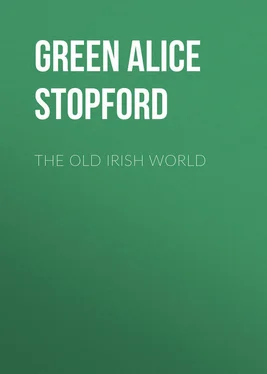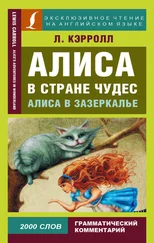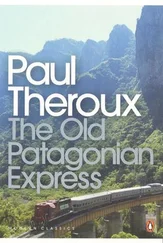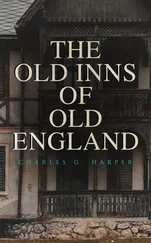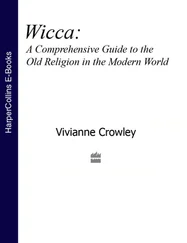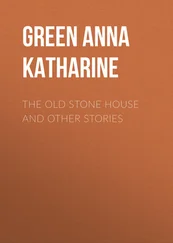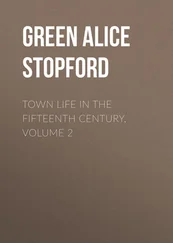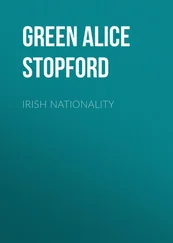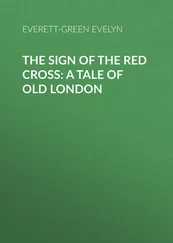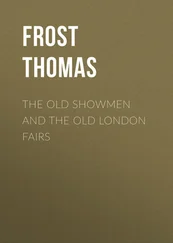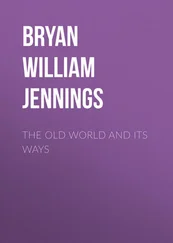Alice Green - The Old Irish World
Здесь есть возможность читать онлайн «Alice Green - The Old Irish World» — ознакомительный отрывок электронной книги совершенно бесплатно, а после прочтения отрывка купить полную версию. В некоторых случаях можно слушать аудио, скачать через торрент в формате fb2 и присутствует краткое содержание. Жанр: literature_19, foreign_antique, foreign_prose, Историческая проза, на английском языке. Описание произведения, (предисловие) а так же отзывы посетителей доступны на портале библиотеки ЛибКат.
- Название:The Old Irish World
- Автор:
- Жанр:
- Год:неизвестен
- ISBN:нет данных
- Рейтинг книги:4 / 5. Голосов: 1
-
Избранное:Добавить в избранное
- Отзывы:
-
Ваша оценка:
- 80
- 1
- 2
- 3
- 4
- 5
The Old Irish World: краткое содержание, описание и аннотация
Предлагаем к чтению аннотацию, описание, краткое содержание или предисловие (зависит от того, что написал сам автор книги «The Old Irish World»). Если вы не нашли необходимую информацию о книге — напишите в комментариях, мы постараемся отыскать её.
The Old Irish World — читать онлайн ознакомительный отрывок
Ниже представлен текст книги, разбитый по страницам. Система сохранения места последней прочитанной страницы, позволяет с удобством читать онлайн бесплатно книгу «The Old Irish World», без необходимости каждый раз заново искать на чём Вы остановились. Поставьте закладку, и сможете в любой момент перейти на страницу, на которой закончили чтение.
Интервал:
Закладка:
In this way there grew up an orthodox history based on sources in the English tongue alone. The Colonists laid down by authority its dogmas and axioms. All that agreed with this conventional history was reputed serious and scholarly: whatever diverged from it was partial, partizan, or prejudiced. “Impartiality” and “loyalty” became technical terms, with a special meaning for Ireland. The two words were held also to be interchangeable. A strictly “impartial” writer must not let his “loyal” eye swerve from the fixed point, England. As a judicious Englishman said of his compatriots, they only think a man impartial when he has gone over to the opposite side.
The results of this system are conspicuous. A Frenchman may unreproved write with affection and ardour of France, and an Englishman of England. An Irishman, however, is in another case. He must have no patriotic fire for his own people. He must not acclaim their victories nor mourn their defeats. Take an illustration of this temper. A clergyman has lately written to the Church of Ireland Gazette to condemn history readers “written from an anti-English and anti-Church point of view”; he complains that the writer describes the battle of the Blackwater in 1598, where the English were routed, as “a glorious victory for the O’Neill.” Such a phrase as this cannot be allowed to Irishmen. Or as a writer to the Irish Times puts a similar argument: “If the Nationalists want for ever to live in the glories of the past and to harp upon them, why do they not go far enough back … to the time when they ate their grandmothers … and indulged in all sorts of hellish rites.”
In fact, as we trudge along the dull beaten road of the orthodox history we never escape, not for a moment, from the monotonous running commentary which sounds continually at our side. “Nomadic,” “primitive,” “wigwam,” “aboriginal,” “savage,” “barbarous,” “lawless” – the words are always at hand. In the moral tale the accustomed stream of precept and delation never runs dry. It follows us through all the strictly “impartial” writers. The Irishman was a “kerne.” The Irish word cethern (kerne) meaning a troop or company of soldiers, probably foot soldiers, is as old as the Latin caterva with which it is cognate, or the Umbrian kateramu , and so is of quite respectable lineage; but being a foreign word to the Englishman, he used it as a natural term of contempt, as though a Chinese should cry “sailor” or “merchant” when he meant to say “English devil.” More than that, the Irishman was a “nomad,” apparently because he sent his cattle to graze on the hills in summer – a custom which in modern Switzerland is held to be quite respectable by admirers of Federalism. This “nomad” idea is familiarly handed about from one writer to another. One of the most esteemed historians in Dublin was Mr. Litton Falkiner, who has added some notable pages to later Anglo-Irish history. Yet he was satisfied to dismiss the Irish population of mediæval times in one terse phrase: “the pastoral, and in great measure nomadic Celts, who stood for the Irish people before the 12th century” – in other words, before the Norman invasion. This absurd sentence seems to pass current; no objection has been made to it. What would educated Englishmen think of a leading historian who dismissed the pre-Norman population of that island as “boorish Low-Dutch, hut-dwellers round a common field cut into strips after their barbarous manner, who stood for the English people before the Norman Conquest ?” Trivialities and ignorances of this sort are not in fashion in English history, and it is time that they were out of fashion in Ireland.
Irishmen of the north still preserved, Mr. Falkiner told us, even to the end of the 17th century, “all the primitive characteristics of the scarcely more than nomadic civilisation of Ulster.” With summary contempt he pretended to dispose of what he fancifully termed “the lawless banditti who commonly formed the body-guard of an Irish chief”; and in the orthodox manner confronts “Irish law” and “Irish lawlessness” under what he called “the English ownership of Ireland.” The great Hugh of Tyrone is described as looking “on the onward march of English institutions with feelings not very different from those with which the aborigines of the American continent beheld the advance of the stranger from the east.” In the same spirit he informed Englishmen that Ireland was sadly deficient in the wealth of historical and literary associations which form the romantic charm of England. “Cathedral cities, in the sense in which the term is understood in England, Ireland may be almost said to be without. A few of the towns,” he generously admitted, “contain, indeed, the remains of ecclesiastical and monastic buildings. But even where these exist they are, with one or two exceptions, sadly deficient in human interest.” It is a cheap method, even if it is one out of date elsewhere, to deny human interest to a subject which one has learned to ignore, and may desire to see forgotten. Can no human interest touch the heart in Dromahair or Donegal or Glendalough? There is a remote and little-known road in the plains of Mayo where a singular sight may be seen. Near it stand the ruins of a majestic abbey founded over seven hundred years ago (1189-1190), by Cathal O’Connor (whose foster-father’s tomb has lately been found at Knockmoy with its Irish inscription). Nave and transepts were laid bare and open from their immense gable ends, and the tower flung from the four splendid arches that supported it, but the old vaulted roof of the choir still remains; and here, it is said, in this remoteness, is the only ancient church of the Irish where, amid the universal destruction and confiscation, they have been able to carry on their old worship from the old days till now. In this land of the banished – “to hell or Connacht” – mass was without ceasing celebrated in the choir; and from the hearts of the worshippers kneeling in the nave and transepts under the open sky a prophecy arose that when the church was roofed once more Ireland would be freed. Songs still sung among Connacht peasants tell of such services amid ruins of their holy places, the priests wet with the rain, the women’s clothes bedraggled, the men carrying small stone flags so as to have a dry spot for their knees. Not in any way was such a place like an English cathedral, but if brave men’s vows and prayers and tears for seven centuries can confer human interest the stones of Ballintober are precious.
The problem remains, however (for insoluble problems beset every false position) that according to Mr. Falkiner’s theory the history of towns and cathedrals only began with “the English ownership.” How was it that these Englishmen left none of their “romantic charm” there? What strange history lies hidden behind this saying?
Another historian takes up the same taunt – a true scholar and worker who has added to our knowledge of the close of Stuart rule in Ireland. “The Irish,” says Dr. Murray, “are indeed a strange race… No monument marks the site where the Irish hero and the Irish thinker repose… The graves of a patriot like Owen Roe O’Neill, and of a statesman like Archbishop King … are unknown. The thrill that an Englishman feels in Westminster Abbey when he enters the presence of the mighty dead is denied an Irishman, for he has not taken care of the dust of his immortals.” A memorial by the defeated Irish to Archbishop King of Dublin, ardent supporter of the Dutch conqueror, passionate worker for the Protestant succession, four times Lord Justice for the government of Ireland under William in those days of agony and despair – this is a lofty counsel of perfection, such as we give to others. The Irish raised no monument to Owen Roe O’Neill – no monument, with Cromwell’s soldiers abroad in the land, to the general proclaimed by the English Government “traitor, rebel, disturber of the common peace” – is that the charge? Alas! I wonder from that day to this what welcome would have been given in a Protestant churchyard, guarded by the conquerors, to an Irish memorial over the grave of Owen Roe O’Neill. The dust of the Irish immortals lies indeed far scattered. Has Dr. Murray ever stood in the solitary burial places of Rath Croghan, of Iniscaltra, of Clonmacnois? Has he counted the stones in Athenry or those heaped up in Burris? Has he seen the bones of the martyrs strewn from sea to sea? Surely he himself has told us that “the Irish custom of burying their dead in an old ruined church or monastery was forbidden,” and that not by the Irish, but by the Church of the English. From the Reformation until eighty-two years ago every Irish Catholic was needs carried at death to a Protestant cemetery, and it is only within the life-time of men now living that, when Catholic prayers at the grave were denied, the Irish people at last secured in 1829 a burying place of their own.
Читать дальшеИнтервал:
Закладка:
Похожие книги на «The Old Irish World»
Представляем Вашему вниманию похожие книги на «The Old Irish World» списком для выбора. Мы отобрали схожую по названию и смыслу литературу в надежде предоставить читателям больше вариантов отыскать новые, интересные, ещё непрочитанные произведения.
Обсуждение, отзывы о книге «The Old Irish World» и просто собственные мнения читателей. Оставьте ваши комментарии, напишите, что Вы думаете о произведении, его смысле или главных героях. Укажите что конкретно понравилось, а что нет, и почему Вы так считаете.
